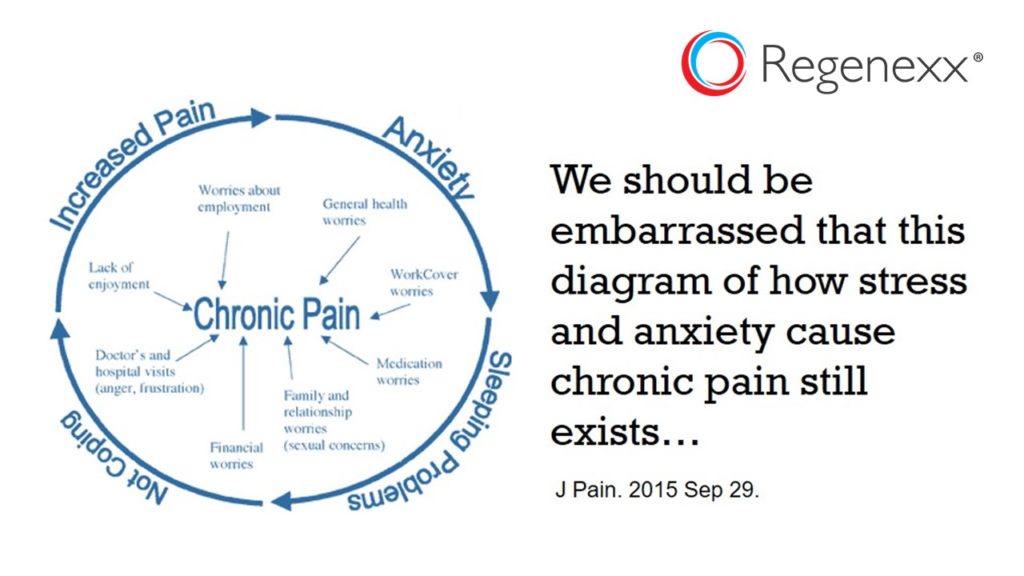Your Back Pain Causes Your Brain to Shrink! RIP Sarno…
One of the most frustrating things of my career has been devoting my life’s work to helping patients with chronic pain only to find out that there were “chronic pain deniers”. While our growing knowledge of the neurobiology of pain makes that statement seem ridiculous now and has forced most of them into the academic equivalent of the witness protection program, there was a time when “pain deniers” were quite real. Perhaps the worst of them was John Sarno, a NY physician that wrote a series of best selling books that tried to convince patients that their pain was all in their head. Now a new study continues to shatter Sarno’s hypotheses by showing that chronic pain is really all in your head – in fact it’s in your shrinking Amygdala!
The concept that chronic low back pain causes certain parts of the brain to shrink and atrophy is not new. We’ve had study after study published on this topic for the last decade plus. Metaphorically, it represents perhaps the final nails in the Sarno coffin, as if back pain is real enough to cause parts of your brain to atrophy and this can be measured on MRI, then the “pain deniers” are far nuttier than the accusations they often made toward back pain patients.
With all of the objective evidence we now have based on sophisticated imaging that back pain is a real physical, neurobiologic phenomenon, it seems insane that there was a time when most patients with chronic low back pain were told it was all in their head. I used to call it the “Crazy or Lazy” hypothesis. Since nothing in our advanced 1980 or 90s technological world could be found on their low back MRI, the patient had to be crazy if they continued to report low back pain symptoms. Or if they weren’t nuts, they were surely just lazy, unwilling to participate in the magic physical therapy exercises that would miraculously make them better (despite the serious lack of any scientific evidence that physical therapy of the types we were using back then actually worked). The popular books written by Dr. Sarno represented the apex of this movement. In these bestsellers, he told patients to ignore their pain as it was simply the stress in their lives manifesting itself in their back or neck.
The Amygdala are two nuclei or processing centers that live on either side of your brain in the temporal lobe that handle memory, decision making, and emotional reactions. The new study looked at the brains of 33 patients with chronic low back pain (LBP) and 33 matched control subjects without low back pain. Special 3D data processing software was used to map and obtain the exact size of different parts and sub-parts of the brain. The right amygdala was significantly smaller in the chronic LBP group. In particular, no correlations were found between the psychological characteristics of the patient’s pain or depression and the size of the structure. In other words, the atrophy was related to the physical aspects of the pain.
These studies about atrophy (shrinking) of parts of the brain and low back pain have been numerous and repeatable across the years. The most prolific author in this area is Apkarian, a professor of neuroscience at Northwestern University. He is a pioneer in the use of MRI and Magnetic resonance spectroscopy to study the brain of pain patients. His early work 15 years ago focused on measuring the abnormal chemistry of the brain in low back pain patients using specialized imaging. By 2008 he had figured out that chronic pain disrupted the normal circuitry of the brain. By 2011 he discovered that parts of the brain of chronic pain patients were undergoing very real atrophy. By 2012 these brain imaging technologies that measured and mapped circuitry were sophisticated enough to pick placebo responders versus not in chronic LBP patients. By the next year his models of the atrophy of certain brain regions could predict which patients would develop chronic pain versus not. More recentlyBy last year, these same brain maps even figured out how the disrupted brain circuitry in chronic pain states caused these patients to have risky financial behaviors!
The upshot? RIP Sarno and the Sarnoites! As JK Rowling once wrote, “The best of us must sometimes eat our words.” The continued studies on the imaging of pain and the dramatic structural impacts it has on the brain need to finally force the “it’s all in your head” group to get munching on the texts and book chapters written by legions of psychologists who without enough scientific understanding, placed judgement on millions of chronic pain patients. I for one will be glad to see these “pain psychologists” out looking for work! As for the silly diagram above of how pain is caused by anxiety and poor coping mechanisms, it’s time to file that nasty thing away in the dustbin of medical history!

If you have questions or comments about this blog post, please email us at [email protected]
NOTE: This blog post provides general information to help the reader better understand regenerative medicine, musculoskeletal health, and related subjects. All content provided in this blog, website, or any linked materials, including text, graphics, images, patient profiles, outcomes, and information, are not intended and should not be considered or used as a substitute for medical advice, diagnosis, or treatment. Please always consult with a professional and certified healthcare provider to discuss if a treatment is right for you.
